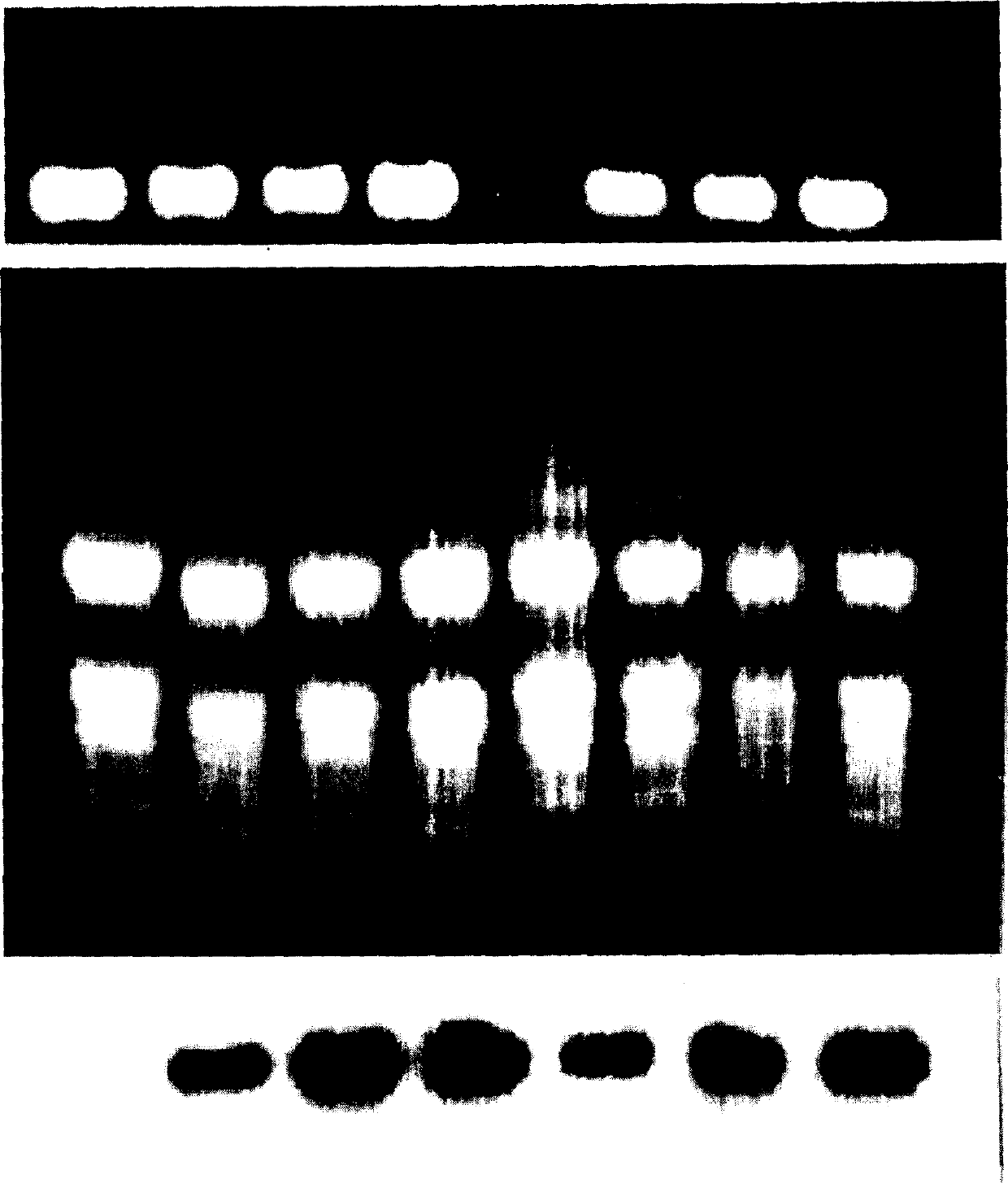Application of Vitreoscilla hematoglobin gene in improving waterlogging resistance of plant
A technology of hemoglobin and Vibrio lucidum, which is applied in the field of Vibrio lucidum hemoglobin gene, and can solve the problems of insignificant effect and the like
- Summary
- Abstract
- Description
- Claims
- Application Information
AI Technical Summary
Problems solved by technology
Method used
Image
Examples
Embodiment 1
[0037] DETAILED DESCRIPTION OF THE PREFERRED EMBODIMENTS Example 1 (Application of Vibrio vibrio hemoglobin gene in tobacco waterlogging tolerance) Construction of VHB expression vector and expression cassette 1. Construction of vector
[0038] Plasmid RED2 contains VHB gene. After we extracted and purified plasmid RED2, we digested it with restriction enzyme HindIII to obtain two fragments (2.2Kb and 2.7Kb). Since there are no effective cloning restriction sites at both ends of the known VHB sequence, the BamHI and SacI restriction sites were connected to the 5' and 3' ends of VHB by the method of primer design, and the VHB gene was analyzed by PCR method. After the amplification product was recovered, it was digested with BamH / SacI and gel purified to obtain the target DNA fragment. Plasmid pBI121 was also digested with BamHI / SacI, and after dephosphorylation at the 5' end, the target DNA fragment obtained earlier was ligated with it to construct the...
Embodiment 3
[0038] Plasmid RED2 contains VHB gene. After we extracted and purified plasmid RED2, we digested it with restriction enzyme HindIII to obtain two fragments (2.2Kb and 2.7Kb). Since there are no effective cloning restriction sites at both ends of the known VHB sequence, the BamHI and SacI restriction sites were connected to the 5' and 3' ends of VHB by the method of primer design, and the VHB gene was analyzed by PCR method. After the amplification product was recovered, it was digested with BamH / SacI and gel purified to obtain the target DNA fragment. Plasmid pBI121 was also digested with BamHI / SacI, and after dephosphorylation at the 5' end, the target DNA fragment obtained earlier was ligated with it to construct the expression vector PBI121 / RED2. After introduction of Agrobacterium LBA4404, it was used for the transformation of tobacco. 2. Recombinant plasmid digestion and sequencing identification 1) PCR primer P1 (5'to 3', 29bp) for VhbCGG GAT CCA TAA TAA TGA ACT TAA GGA...
PUM
 Login to View More
Login to View More Abstract
Description
Claims
Application Information
 Login to View More
Login to View More - R&D
- Intellectual Property
- Life Sciences
- Materials
- Tech Scout
- Unparalleled Data Quality
- Higher Quality Content
- 60% Fewer Hallucinations
Browse by: Latest US Patents, China's latest patents, Technical Efficacy Thesaurus, Application Domain, Technology Topic, Popular Technical Reports.
© 2025 PatSnap. All rights reserved.Legal|Privacy policy|Modern Slavery Act Transparency Statement|Sitemap|About US| Contact US: help@patsnap.com



